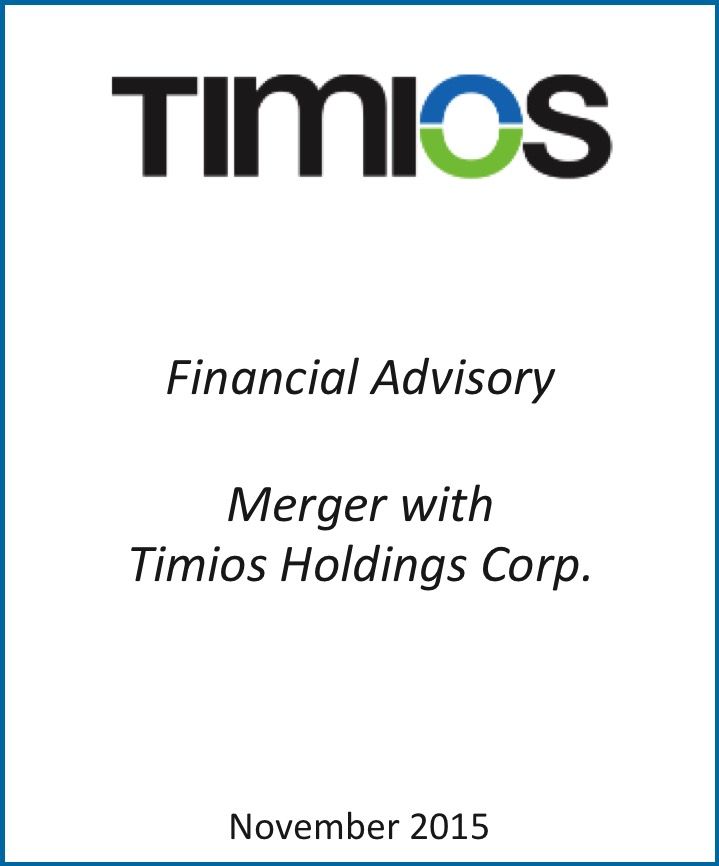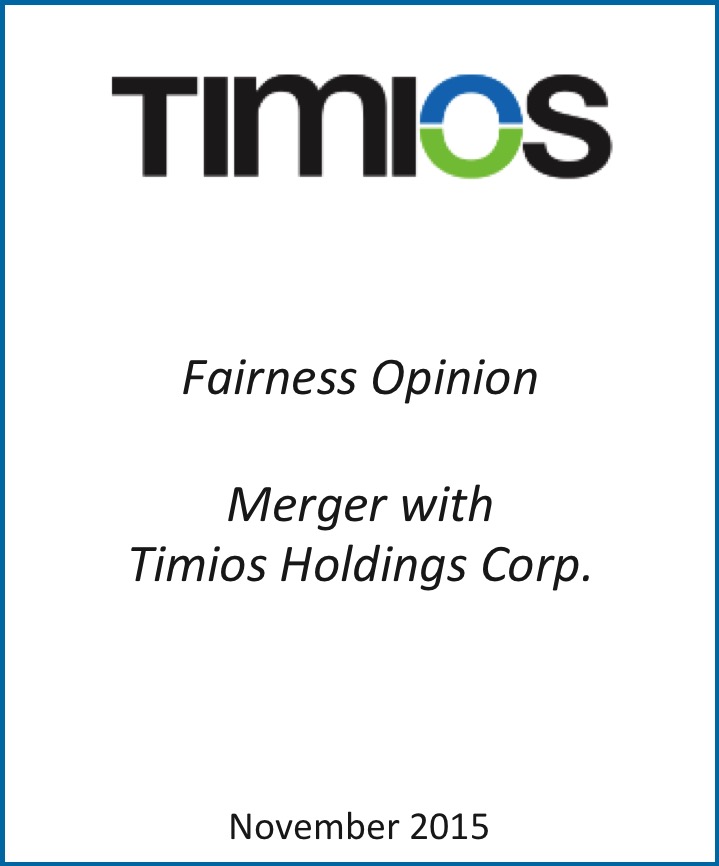Don’t Wait! Sell Your Business Now Before Rates Rise, Recession Hits
The Street
November 17, 2015
Thinking of selling your business in the next five years? If so, do it now, James Cassel, chairman and Co-founder of Cassel Salpeter & Co., tells TheStreet. Rising interest rates will raise borrowing costs and reduce what buyers may be willing to pay. Moreover, today’s valuations are relatively high and private equity firms have a lot of money to invest – all of which may not last. Click on the image below to watch the segment.
- To view video, click here.
7 Ways to Build a Winning Team for Long-Term Success
By: James Cassel
November 17, 2015
 Many business owners struggle with one of the most important aspects affecting the success of their companies: hiring, training and empowering the right team members. Based on our experience, here is some practical guidance.
Many business owners struggle with one of the most important aspects affecting the success of their companies: hiring, training and empowering the right team members. Based on our experience, here is some practical guidance.
1. Find team members who fit your business culture.
This means much more than hiring financial planners at your wealth-management firm. This involves identifying your company’s key performance indicators and making strategic hiring decisions based on them. For example, if you have identified a correlation between great customer service leading to stronger sales at your company, then you should aim to hire team members with those skills and talents.
2. Consider standard skills and aptitude tests.
When hiring, it can be difficult to get the full picture on a potential candidate from a mere interview. In addition to asking various members of your team to participate in the interview process and share their perspectives of potential hires, you should consider using tools such as skills and aptitude tests. There are many to consider. Publix, which is widely noted for its excellent customer service, requires job applicants to complete aptitude tests that assess how they would react in various customer service scenarios.
3. Evaluate candidates outside the interview room.
Keep in mind that your prospects’ personal lives should be compatible with the professional lives they would have to maintain while working at your company. Consider having dinner with prospects to observe their demeanor outside of professional settings. Curious about how a potential executive might manage your team? Watch how they treat their significant other and the staff members at a restaurant. They probably would not treat your team members too differently. This rule of thumb is followed by so many CEOs that it has become known as the “Waiter Observation.”
4. Create a positive work environment.
It’s important to create a positive work environment with meaningful rewards and incentives that your team members appreciate. Whether it is money or recognition or both, find out what best motivates team members to keep them engaged. Different generations want different things. Baby boomers and millennials want and need different things.
5. Encourage team members to do things like they like.
Pushing is not the only way to maximize productivity and performance. People are more likely to succeed when they are doing things they enjoy. Understand what knowledge, skills, and talents your team members have, and put them in roles that best suit them. For example, if you have an excellent graphic designer, do not assume that the best way to reward him or her is with a promotion to run the department. That person might not succeed in a director role simply because he or she does not enjoy or is not good at managing people.
6. Invest in Training
Training, coaching, and mentoring are worthwhile investments that can sharpen your team’s skills. Just as important, they show your team members that you care enough to invest in their future. You might bring in an outside speaker, encourage your team members to attend industry conferences, or provide an annual education allowance.
7. Let people go when necessary.
Ensuring you hire the right people is just as important as promptly terminating any mis-hires. When you recognize you have made a mistake, it is prudent to correct the error swiftly. Procrastinating the termination does no favors for your company, your team, or the mis-hire.
Investing the necessary time and resources to more strategically acquire, train and manage one of your biggest assets – your team – is critical to achieving your goals. Show your people what they mean to your company and how they fit into the big picture. They are likely to respond with appreciation and loyalty, and you will lay the foundation for a strong workforce ready to support your continued growth and success.
James Cassel is co-founder and chairman of Cassel Salpeter & Co., LLC. He may be reached via email at jcassel@casselsalpeter.com or via LinkedIn https://www.linkedin.com/in/jamesscassel
www.casselsalpeter.com
To view original article, click here.
Minding your Business/Inside the Deal: Millenials create new challenges and opportunities for middle-market business owners
By: James Cassel
November 15, 2015
For many middle-mark et business owners, millennials are creating quite a workplace conundrum. While dealing with today’s over-confident young Americans can be challenging, we must recognize the opportunities and find a way to work with the generation that is fast becoming the largest of our workforce.
et business owners, millennials are creating quite a workplace conundrum. While dealing with today’s over-confident young Americans can be challenging, we must recognize the opportunities and find a way to work with the generation that is fast becoming the largest of our workforce.
The millennial generation (Americans born between 1982 and 2000, and currently ages 18 to 34) currently numbers 83.1 million. It has surpassed the 75.4 million baby boomer generation (born between 1946 and 1964, and currently ages 51 to 69), according to U.S. Census Bureau estimates. Clearly, the tide is turning. While everyone is different and should be evaluated individually, it is helpful to make certain generalizations to assess how to best approach this generation as a group.
Millennials tend to have rather strong views on the workplace — usually with themselves positioned at the center of it, sporting jeans, and with their bosses taking lessons from them. However, these attitudes are not helping them as much as they would like, since their baby boomer bosses are still running the show. For millennials, a healthy work-life balance is a challenge as well as a priority. Employers of all sizes and in all industries are experiencing this and struggling to find the right approach.
Millennials are extremely connected, savvy on technology, entrepreneurial, and eager to jump ship the moment they are no longer feeling “the vibe” at work. It is not uncommon for them to have many different jobs in a short period. While older generations were taught to believe in the value of longevity, loyalty, and tenure in order to grow within an organization, today’s youth find it perfectly reasonable to change jobs once or twice a year. Some experts estimate that most millennials will have five or more jobs before they are 30 years old. This creates a significant obstacle for middle-market business owners who are trying to build a strong workforce with continuity and grow their businesses.
So, how do you deal with this situation? First, you must do your homework and understand the millennial mind. There is no shortage of writing on the subject, and a quick Google search will yield links to countless articles and books.
The MTV poll “No Collar Workers” sheds some light on what they want. Basically, “everything” and “now.” Fast-paced environments and promotions without traditional rules and procedures. Short on attention spans and long on sense of entitlement, they are not necessarily motivated by money (or so they say). Rather, they have a strong desire for constant mentoring, praise and reassurance, flexible hours, and office perks like gym memberships and goodies in the kitchen, including the right coffee. They do not want to be merely given instructions to follow or told what to do — they want to feel they are part of a team and making things happen.
Millennials would love to make the nine-to-five workday illegal. They want to work when and how they want — with flexible schedules that allow them to come to the office sometimes or never. They work in spurts, drifting off at different moments to dabble in social media or do other personal things. In the MTV poll, 70 percent of millennials said they need “me time” while working, compared with 39 percent of baby boomers. They want to “chill” (although I am not sure I know what this means).
As far as managing millennials, you should keep in mind that standard annual or bi-annual reviews do not lead to job satisfaction. They want continuous feedback, ahora. Some say this is partly because they grew up with social media, in which they are given instant gratification and responses whenever they tweet or post anything. Without a doubt, they require more attention than older employees who were raised to be more emotionally mature and work more independently.
Therefore, it is up to you to find ways to keep them engaged and motivated. Knowing that every team is different and has different dynamics, you should keep a close pulse on yours so you can develop the right culture. Consider the physical layout and decor of your office, and look for ways to improve it to help keep them engaged. For example, depending on the nature of your business, you might consider an open floor plan with lots of natural light and areas conducive to collaboration.
Consider also your company attire. If corporate attire is a must, you might strike a compromise by implementing Casual Fridays maybe on more days than just Fridays. The MTV study finds that 79 percent of millennials think they should be allowed to wear jeans to work at least sometimes, with 93 percent of them saying they want jobs where they can be themselves and dress how they feel most comfortable. While this is not uncommon in technology companies or startups, it can be an issue in more corporate environments.
Just as important, do not take it personally — or give up on hiring millennials — when they decide to quit for no legitimate reason only one year after you hired and trained them. Their behaviors reflect more about their unique values and perceptions than they do on anything grounded in reality.
Regardless, while hiring millennials might be challenging, you have no choice. They bring fresh ideas and great value to companies, and they are becoming our workforce. Find ways to make your company more conducive to their work patterns and preferences. By attracting and retaining the right millennials who will support your ongoing growth, you can gain a significant advantage.
James Cassel is co-founder and chairman of Cassel Salpeter & Co., LLC. He may be reached via email at jcassel@casselsalpeter.com or via LinkedIn https://www.linkedin.com/in/jamesscassel
www.casselsalpeter.com
To view original article, click here.

Get In Touch
Cassel Salpeter & Co.
801 Brickell Avenue,
Suite 1900
Miami, FL 33131
(305) 438-7700
Stay Informed
Sign up today for insights and growth strategies.
Subscribe Now







